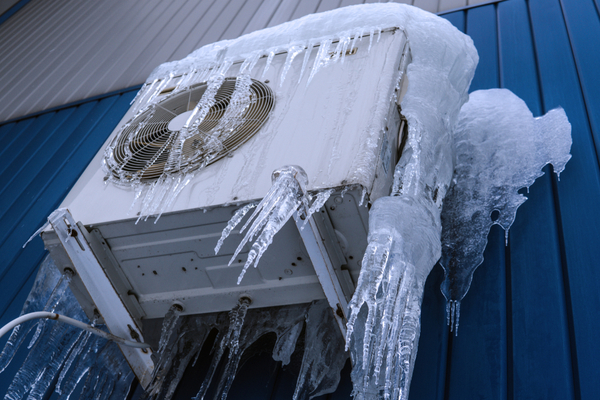One of the most-asked questions from homeowners with hardworking A/C units is: When the season’s over, should I cover it for protection?
Modern outdoor A/C systems are built very well and tested to ensure that they will hold up in extreme circumstances. The condenser (the big box that sits outside) is outfitted with a durable finish to withstand snow, rain and the heat of the sun. The mechanics and coils within the box are well-designed to hold up to extreme heat and cold, too. The quality of the materials and the product’s finish are a big reason that it’s typically unnecessary to cover the A/C unit in the off-season.
The most important thing that any homeowner can do to winterize the system is check the product for leaves, pine needles, branches, animal nests and other build-up. These items can cause damage and affect the unit’s ability to perform well over time.
Your geography and the positioning of your outdoor A/C condenser may be more likely to impact whether or not (or to what degree) you cover the unit during the winter.
In the north (where A/C might only be used for 4-6 months of the year), one of the reasons you might be advised to cover your A/C unit after summer is to protect it from the weight of falling leaves, and from impending snowfall and ice build-up. Though the units are certainly tested to withstand icy conditions, excessive snow and ice can be damaging to the coils over time. One thing to keep in mind is that any type of plastic or airflow-restrictive covering will actually promote rusting and internal moisture damage, and therefore should never be used. (Also, those cozy, water-tight covers may encourage animals to make their home inside you’re A/C unit, which you definitely want to avoid.) Tim Storm, Senior Product Manager at Trane, suggests that “it doesn’t hurt to cover up the unit if it’s not used during the winter months, as long as the cover or fabric can breathe and does not lock in moisture, which could be detrimental to the finish and components.”
Another solution that’s an alternative to a breathable wrap is an accessory that attaches to the top of the unit to create a barrier against debris, improve airflow and help redirect water. Check with your product’s manufacturer to see if there is an all-weather protective attachment for your A/C unit.
During summer months, if your home utilizes window A/C units, it’s best to remove them from the windows when the weather turns cold. This will help prevent drafts around the appliance and will also help the unit last longer, as they are not intended to be left in place year-round. Never cover them with plastic, as it will trap moisture and contribute to mold growth when the product is not in use.
Wall-mounted units, which are more difficult to remove during the fall and winter, can also be covered with a breathable fabric that will help alleviate drafts without collecting moisture.
Photo Credit: Anton_dios / Shutterstock.com
